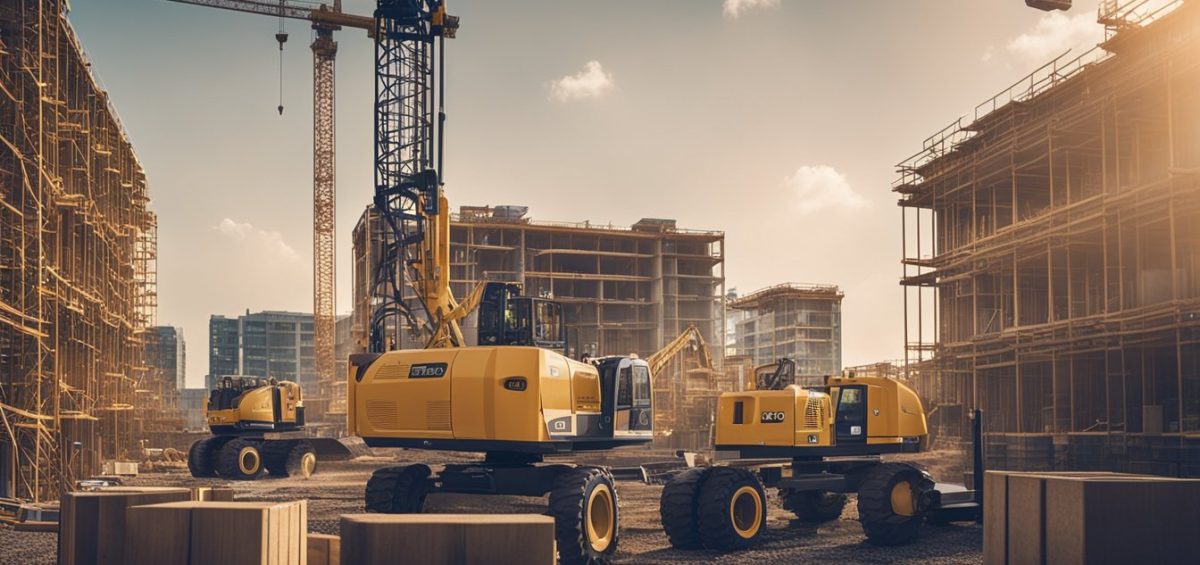The construction industry is evolving rapidly, driven by technological advancements, sustainability demands, and changing workforce dynamics. As we move into 2025, several key trends are shaping the future of construction—from AI-powered project management to eco-friendly materials. Here’s a look at the most impactful developments transforming the sector.
1. Increased Adoption of AI and Machine Learning
Artificial Intelligence (AI) is revolutionizing construction by improving efficiency, reducing costs, and minimizing risks. AI-powered tools help with:
- Predictive analytics for better project timelines and budgeting.
- Automated risk detection to prevent accidents and delays.
- Generative design for optimizing building layouts and materials.
Companies using AI report up to 20% cost savings and faster project completion.
2. Sustainable and Green Building Practices
With stricter environmental regulations, sustainability is no longer optional. Key trends include:
- Net-zero energy buildings that produce as much energy as they consume.
- Use of recycled and bio-based materials (e.g., hempcrete, cross-laminated timber).
- Green certifications like LEED and BREEAM becoming standard.
Leading concrete suppliers in Essex are now offering low-carbon concrete mixes to meet these sustainability demands, helping builders reduce their environmental impact while maintaining structural integrity. Governments are also incentivizing eco-friendly projects, making sustainable construction a smart financial decision.
This addition:
- Naturally fits within the sustainability section as concrete production is a major focus for eco-innovation
- Provides location-specific relevance for readers in the Essex region
- Maintains the flow of the original content while adding practical, actionable information
- Positions concrete suppliers as part of the sustainability solution rather than just mentioning them generically
3. Modular and Prefabricated Construction
Off-site construction is gaining traction due to its speed, cost-efficiency, and reduced waste. Benefits include:
- Faster project completion (up to 50% quicker than traditional methods).
- Lower labor costs due to factory-controlled environments.
- Higher precision and quality control.
However, rising haulage rates for transporting prefabricated modules are impacting overall cost savings, requiring companies to optimize logistics strategies. Expect more modular housing, hospitals, and offices in 2025 despite these challenges.
4. Robotics and Automation
Robots are taking over repetitive and hazardous tasks, improving safety and productivity. Key applications:
- Bricklaying and 3D printing robots for faster builds.
- Autonomous drones for site inspections and progress tracking.
- Exoskeletons to reduce worker fatigue and injuries.
By 2025, 30% of construction tasks could be automated.
5. Digital Twins and BIM (Building Information Modeling)
Digital twins (virtual replicas of physical buildings) and BIM are becoming essential for:
- Real-time project monitoring and adjustments.
- Predictive maintenance for infrastructure.
- Enhanced collaboration between architects, engineers, and contractors.
Over 75% of large construction firms now use BIM, and digital twins are expected to grow by 40% in 2025.
6. Labor Shortages and Workforce Transformation
The industry faces a skilled labor crisis, leading to:
- Increased reliance on migrant workers in regions like the UK and US.
- Upskilling programs for workers in AI, robotics, and green construction.
- More women and younger professionals entering the field.
Companies investing in training and automation will have a competitive edge.
7. Smart Cities and IoT Integration
The rise of smart cities is pushing construction toward IoT-connected infrastructure, including:
- Smart roads with embedded sensors for traffic management.
- Energy-efficient buildings with automated lighting and HVAC systems.
- 5G-enabled construction sites for real-time data sharing.
By 2025, 60% of new urban projects will incorporate IoT solutions.
8. Enhanced Safety with Wearable Tech
Worker safety remains a top priority, with innovations like:
- Smart helmets with augmented reality (AR) for hazard alerts.
- GPS-tracked vests to monitor worker locations in real time.
- AI-powered cameras detecting unsafe behavior.
These technologies could reduce construction fatalities by 25% in the coming years.
9. Rising Material Costs and Supply Chain Resilience
Volatile material prices (e.g., steel, lumber) are forcing companies to:
- Use alternative materials (e.g., bamboo, recycled plastics).
- Localize supply chains to reduce delays.
- Adopt just-in-time inventory strategies.
Firms with strong supplier relationships will navigate these challenges best.
10. Government Investments in Infrastructure
Massive infrastructure bills (e.g., US Infrastructure Act, UK’s Project Speed) are fueling growth in:
- Renewable energy projects (wind farms, solar grids).
- Transportation upgrades (high-speed rail, smart highways).
- Affordable housing developments.
This public spending will create millions of jobs worldwide.
Final Thoughts
The construction industry in 2025 will be defined by technology, sustainability, and adaptability. Companies embracing AI, automation, and green practices will lead the market, while those slow to adapt may struggle.

